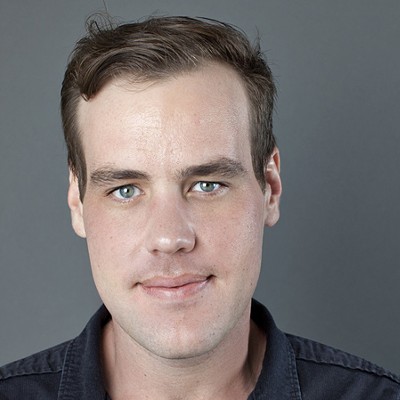For years, we deluded ourselves that Lincoln Road could become a quirky subversion of the suburban shopping-mall experience, that the uniquely Miami culture the strip once exemplified could coexist alongside giant corporations' fast-fashion megastores. Sure, for a while you could get khakis at the Gap and a cheap shirt from H&M and then go check out drag queens, live jazz, a sale on mystical healing crystals, literary readings, samba lessons, or any host of outré diversions that would have seemed downright bizarre at an ordinary mall.
But the recent announcement that it's closing time for Van Dyke Café, the iconic restaurant and live jazz hot spot, is just the latest gut punch reminding us that Lincoln's character is quickly becoming as bland as food court grub. Gay club Score and its drag queens now call a spot off Washington Avenue home. One-stop new-age shop 9th Chakra relocated to Alton Road. Dessert mecca Ice Box Café couldn't even ride an Oprah endorsement to Lincoln sustainability and moved to Sunset Harbour. David's Cafe II and Zeke's Roadhouse are gone too.
Nothing is sacred. The Miami Beach Community Church, located on prime property on Lincoln, is considering leasing its courtyard to a developer in a 50-year, $100 million deal. "This is a miracle from God," the head of the church's board of directors told New Times. We must have missed the parts of the Bible that characterize gentrification as a miracle.
We really shouldn't be surprised, though. This is what Lincoln Road was supposed to be. South Beach pioneer Carl Fisher drained swampland in the 1910s to create the road with the idea of turning it into a business and retail district. By the '40s, Life magazine declared it "Luxury Lane." Saks Fifth Avenue, Burdines, Bonwit Teller, and "hoity-toity haberdashers" lined the street.
In the '60s, city leaders, noting the success of America's first pedestrian mall in Kalamazoo, Michigan, closed the street to traffic. They enlisted famed architect Morris Lapidus, the father of Miami modernism, to helm the transformation. "I designed Lincoln Road for people — a car never bought anything," Lapidus quipped at its opening, leaving little doubt about his commercial vision.
Truth is, the founders' vision wasn't that much different from any seaside Florida town: a ritzy winter retreat for rich northerners to spend money. Only geography differentiated Miami from West Palm Beach, Naples, Tampa, and Daytona Beach.
But then came the late '70s to mid-'80s, which were not kind to Miami Beach. Lincoln Road's storefronts sat empty. In 1981, a letter writer to the Miami News called the strip a "ghost town." Five years later, the Miami Herald described it as a "road to nowhere." Anyone familiar with Miami Vice could tell you it was a rough area.
Tragedy, both economically here and politically and socially elsewhere, gave South Beach a new identity. Cuban expatriates came to escape communism. Gay men, ravaged by the AIDS crisis in the '80s, retreated to SoBe to spend their last years in its hospitable climate. Artists, photographers, and designers followed; then came the hangers-on and the partiers. Those original developers may have their names splashed all over town, but it's those unwashed masses who gave Miami Beach its flavor and uniqueness. It's those people who revived Lincoln Road.
That's why the Van Dyke's imminent closure is particularly poignant. The restaurant helped revitalize Lincoln Road. The Van Dyke was one of the first businesses to set up shop in the slowly reinvigorating area and was certainly the oldest to have survived. It served affordable but tasty fare downstairs and more famously offered live jazz and R&B upstairs every night.
It's a victim of the very revival it helped spur. The Van Dyke never became less popular. Anyone who walked by could see packed tables, but the restaurant's owners couldn't keep up with the rising rent. "Had to happen. No restaurant can afford $300 per sq ft! That's right, 300+ a sq ft on Lincoln Rd," tweeted John Kunkle, CEO of the local restaurant group 50 Eggs, which owns Khong River House off the main strip. Such is the cruel reality of unchecked development and capitalism. Even if you build a landmark business that boasts a loyal customer base, you can still meet your demise to rising rent and gentrification.
There may have been a nearly 50-year hiccup, but the original vision of Lincoln as a money-grabbing playground for wealthy snowbirds is finally coming to fruition. This same process already remade Coconut Grove, it's now almost complete on Lincoln Road, and it's beginning in Wynwood.
But will Miami retain its edge and cultural and tourism dominance of the South as it looks more like Generic Town, USA? Will there be a price to pay now that one of the most recognizable roads resembles little more than an outdoor version of a soulless suburban mall full of chain stores?
Only time will tell. Who knows, by then we might all be underwater anyway.











